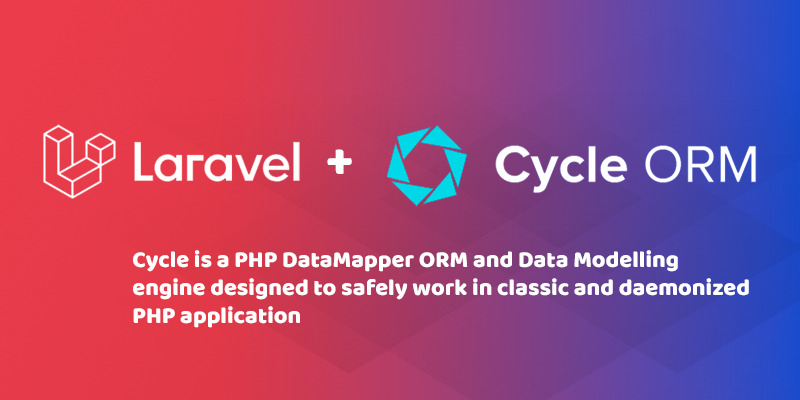Download the PHP package butschster/cycle-orm without Composer
On this page you can find all versions of the php package butschster/cycle-orm. It is possible to download/install these versions without Composer. Possible dependencies are resolved automatically.
Informations about the package cycle-orm
Cycle ORM integration for the Laravel Framework

Cycle is a PHP DataMapper ORM and Data Modelling engine designed to safely work in classic and daemonized PHP applications (like RoadRunner). The ORM provides flexible configuration options to model datasets, a powerful query builder, and supports dynamic mapping schemas. The engine can work with plain PHP objects, support annotation declarations, and proxies via extensions.
Full information - https://cycle-orm.dev/docs
Requirements
- Laravel 7.x
- PHP 7.4 and above
Installation and Configuration
From the command line run
Optionally you can register the EntityManager, Transaction and/or ORM facade:
Env variables
Configuration
Publish the config file.
Configure Databases
The list of available connections and databases can be listed in the config/cycle.php - database section.
For more information see https://cycle-orm.dev/docs/basic-connect#configure-databases
Getting Database Manager ($dbal)
DatabaseManager registered as a singleton container
That's it!
Console commands
php artisan cycle:migrate
Run cycle orm migrations from the directory.
php artisan cycle:refresh
Refresh database schema.
Usage
By default, class locator looks for entities in app folder. You can specify locations in config/cycle.php config file.
Entity Manager
The EntityManager is the central access point to ORM functionality. It can be used to find, persist and remove entities.
Using the EntityManager
You can use the facade, container or Dependency injection to access the EntityManager methods
Finding entities
Entities are objects with identity. Their identity has a conceptual meaning inside your domain. In a CMS application each article has a unique id. You can uniquely identify each article by that id.
Persisting
By passing the entity through the persist method of the EntityManager, that entity becomes MANAGED, which means that its persistence is from now on managed by an EntityManager.
Deleting
An entity can be deleted from persistent storage by passing it to the delete($entity) method.
Example
User
Repository
Create user
Update user
Delete user
All versions of cycle-orm with dependencies
illuminate/config Version ^7.0|^8.0
illuminate/database Version ^7.0|^8.0
illuminate/support Version ^7.0|^8.0
illuminate/contracts Version ^7.0|^8.0
illuminate/console Version ^7.0|^8.0
illuminate/pagination Version ^7.0|^8.0
cycle/annotated Version ^2.0
cycle/migrations Version ^1.0
cycle/orm Version ^1.2
cycle/proxy-factory Version ^1.2.1
cycle/schema-builder Version ^1.1


